LES SAVAGE, JR. – The Shadow in Renegade Basin. Leisure Books; paperback reprint, July 2001. Hardcover edition: Five Star, March 2000.
For those of you who may have come in late, yes, I do do reviews of westerns on this blog. I know I don’t have to explain myself, but it has been a while since one has appeared here, so what I’m going to do is to repeat the following paragraph from the last one I did, which was of Edge of the Desert by Matt Stuart (L. P. Holmes):
“… and whether or not they’re included in Al Hubin’s Crime Fiction IV – Al generally says no unless there’s a leading character who’s actually a detective and involved in solving a case – I have no compunction about reviewing them [westerns] here. Almost every western has a crime component of some kind, and if they don’t, I probably don’t read them. Rustling, gunfighting, horse thievery, burning out homesteaders, it’s all against the law, and therefore – when written up in book form – crime fiction.”

But no more self-indulgent justification! Let me begin by giving you the titles of the three short novels (or long novelettes) included in this particular group of western tales, and the issues of the pulp magazines they first appeared in:
“Plunder Trail.” Frontier Stories, Summer 1944. Savage’s original title: “Oregon Traitor Trail.”
“Brand of Penasco.” Action Stories, Winter 1945, as “Brand of the Gallows Ghost.”
“The Shadow in Renegade Basin.” Frontier Stories, Summer 1950, as “Tombstones for Gringos.”
Savage had a short but prolific career as a western writer. He died in 1958 only 35 years old, but in the short time he had to live, he wrote 25 novels, the last one, Gun Shy, finished by Dudley Dean McGaughey after his death. This does not include a long list of short stories which Jon Tuska has been packaging into collections like this. (Savage’s first published short story was written when he was a mere 17.)
Enough facts. If I’ve read anything by Savage besides this one, it would have been over 50 years ago, and opinions when one is 15 old, plus or minus a couple of years, simply do not count. Which assumes that I’d remember, which I don’t, but I’m sure I did – read one, that is.
Let’s take the two earliest ones first. I appreciate the fact the three stories were published in chronological order. It does help in putting a writer’s career in perspective. Of the first two, I’d say that at time, when Savage would have been in his early 20s, he was absolutely terrific in describing western landscapes and capturing moods, but only so-so in connecting with connecting with his characters and convincing them to come to life.
Something else he was very good at was writing action scenes, the parts of the stories where violence kicks in, delineated blow by blow, and….
… in “Plunder Trail,” that is exactly where the story stops dead in its tracks, at least it did for me. It’s the story of a gambler at loose ends who finds himself part of a wagon train full of homesteaders headed west. Ed Manton also finds himself getting caught up in their hopes and new lives. And when Georges Arvada and his gang strike, as is totally anticipated, it is Manton whose abilities as a leader and with a gun are needed the most.
The last 15 pages need only be skimmed. The fight seems to go on forever, and the last page, in which Manton and Leah are finally reunited, comes both as a relief and as no surprise at all.
Story number two, “Brand of Penasco,” is one of seven short novels Les Savage wrote about Elgera Douglas, familiarly known as Senorita Scorpion, one of the most popular characters to appear in Action Stories, says Jon Tuska in his introduction.

Elgera is blonde and quite a pistol-packing lady, just the right combination to win the hearts of every adolescent boy and young man who might have read the magazine back in 1945. More of her background than this, however, is not given in the story itself.
Truth in advertising. The cover shown to the right is from the Winter 1949 issue, not the one in which the story in this book appeared. Nor is the lady masked in this tale, as she is in most (if not all) of the covers she was featured on. (I just happen to think that she’s shown to her best advantage on this one.)
I think a mistake has been made in terms of not putting all of her adventures into two volumes, say, instead of of scattering them around one at a time in other collections. The impact that she made would have been far greater, I’m sure, with her exploits being able to be read in the order they occurred, as well as the romances she had.
It’s still a good story, but after her friend Chisos is shot and left for dead, the story seems to sag a little, caught up in too much action without enough motivation. The capture of a fellow named Penasco, an outlaw known to have been hanged many years ago but rumored to still be alive and on the loose again, is the primary focus, but the tale, populated by people named Tequila, Bighead and El Cojo, seems to go off in too many directions from there.
It is the title story, “The Shadow in Renegade Basin,” that Jon Tuska, in his introduction to it, seems the proudest of to present. He compares it to Greek tragedy, and describes it as filled with “fratricide and incest.” No kidding. The story had to be rewritten considerably before it could be published in a pulp magazine in 1950. The restored text is supplied.
Unfortunately I do not relate to Greek drama very well, a failure that no teacher of great literature was able to cure. The shadow in the title is that which is supplied by a sinister-looking mountain called El Renegado, and the legends that are told about it. In the rich, fertile valley at its foot, there are no farms, no ranches, no people, until the arrival of two brothers and their mother, hoping there to settle down and prosper.
Enter Christina Velasco, who is beautiful, of course, lives alone somewhere in the area, and equally of course both brothers fall in love with her. There is also a Mexican peddler of rare birds named Pajarero and an hombre named Nacho, both of whom are also, in their differing ways, under Christina’s spell.
As was mentioned earlier, it is no surprise that the ending was changed. And as it was originally written, the story is filled with tantalizing wisps of beautifully described countryside and fragmentary glimpses of fascinating characters who seem to have no control over the events they are in.
It is like no pulp story I have read before, and I have no way of explaining exactly why, other than I’ve done so far.
I also apologize for allowing this review to go on so long. Paraphrasing what I remember someone else much more famous than I having once said, I have not taken the time to make it shorter.
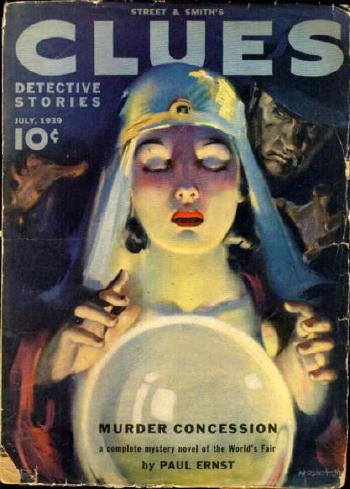
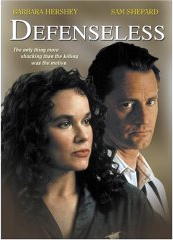
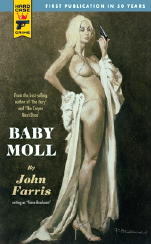
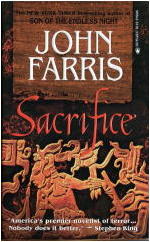
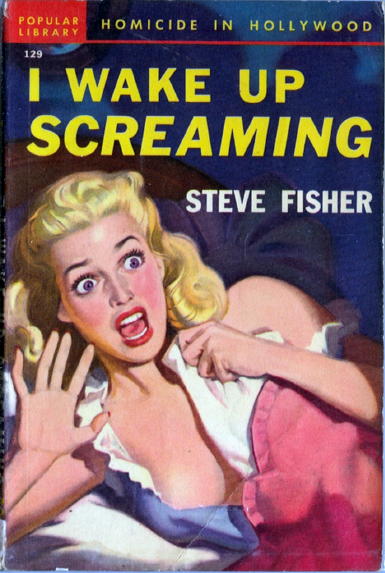

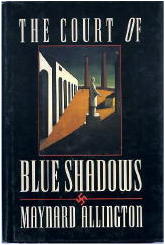
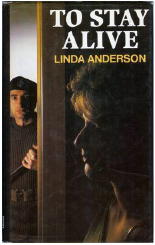
 The latest batch of covers uploaded to Bill Deeck’s Murder at 3 Cents a Day website are those for the
The latest batch of covers uploaded to Bill Deeck’s Murder at 3 Cents a Day website are those for the 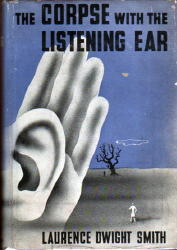 From the August 31, 1940, issue of Publisher’s Weekly: “Arcadia House, Inc., has announced the establishment of two new imprints, one for the publication of detective fiction and one for religious books. Detective novels will be published under the imprint of Mystery House, with Sally Frances as editor in charge. The following titles inaugurate the series: Clue in Two Flats, by R.L.F. McCombs, August 26th; The Corpse with the Listening Ear, by Laurence Dwight Smith, September 20th; Death in the Wheelbarrow, by Jan Gordon, October 10th; Abandon Hope, by Isabel Garland, October 22nd; Homicide Johnny, by Stephen Gould, November 12th. Each book is priced at $2.00.”
From the August 31, 1940, issue of Publisher’s Weekly: “Arcadia House, Inc., has announced the establishment of two new imprints, one for the publication of detective fiction and one for religious books. Detective novels will be published under the imprint of Mystery House, with Sally Frances as editor in charge. The following titles inaugurate the series: Clue in Two Flats, by R.L.F. McCombs, August 26th; The Corpse with the Listening Ear, by Laurence Dwight Smith, September 20th; Death in the Wheelbarrow, by Jan Gordon, October 10th; Abandon Hope, by Isabel Garland, October 22nd; Homicide Johnny, by Stephen Gould, November 12th. Each book is priced at $2.00.”









